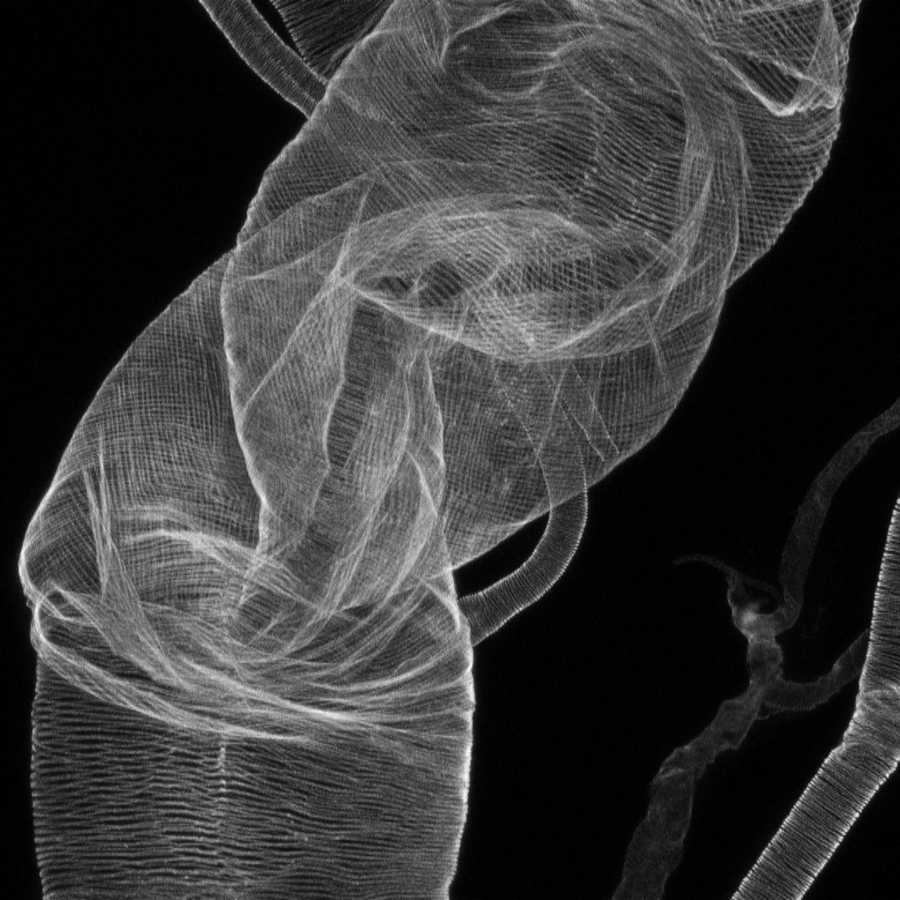
apn1 mutant trachea tube stained with chitin binding probe (CBP). © Kassiani Skouloudaki / MPI-CBG
All living organisms need respiration to survive. One common feature of respiratory organs that most organisms share- from fruit fly to humans- is that they are composed of cells lining a central hollow space, called the lumen. This tube-like organization serves as body’s pluming system and allows transport of vital gases within an organism. During development, the size and shape of tubular airways must be finely coordinated with body growth to ensure optimal oxygen supply to the whole organism. Because the correct size and shape of the tube is critical for organ’s function and aberrant tube sizes can lead to devastating pathologies, understanding what controls tube growth is important. Past studies implicated that tube growth is achieved when cells lining the tube expand their membrane which faces the lumen. This membrane expansion relies on Crumbs, a conserved regulator of cell shape in both invertebrates and vertebrates. However, it remained largely unknown what controls the amounts and localization of Crumbs and thereby membrane expansion and tube growth.
Researchers in the group of Elisabeth Knust at the Max Planck Institute of Molecular Cell Biology and Genetics (MPI-CBG) in Dresden, sought to address this question. They looked at the growth of the respiratory organ of the fruit fly during larval development. In collaboration with the team of Pavel Tomancak in MPI-CBG, they identified a novel gene, which they called apnoia. They found that apnoia depletion caused abnormal tube inflation and twists in the tubular airways of the fruit fly larvae. The first author of the study, Kassiani Skouloudaki explains: “We have shown that the correct size and therefore the air filling airways is tightly controlled by apnoia in fruit flies”. But how does apnoia control tube size? MPI-CBG researchers found that apnoia exerts its function by regulating the proper localization and maintenance of Crumbs at the lumen-facing membrane of the cells surrounding the tube. Kassiani Skouloudaki continues: “We discovered a new molecular pathway that regulates tissue growth of the airway system in the fruit fly”. The researchers published their findings in the journal PLOS Biology.
The study will be of particular interest to those researchers studying tissue growth. The work described in this paper will help reveal new mechanisms of apnoia-mediated regulation of Crumbs in fruit fly airways and may provide molecular insights into growth of other tubular organs.
Skouloudaki K, Papadopoulos DK, Tomancak P, Knust E (2019) The apical protein Apnoia interacts with Crumbs to regulate tracheal growth and inflation
. PLOS Genetics 15(1): e1007852. doi.org/10.1371/journal.pgen.1007852